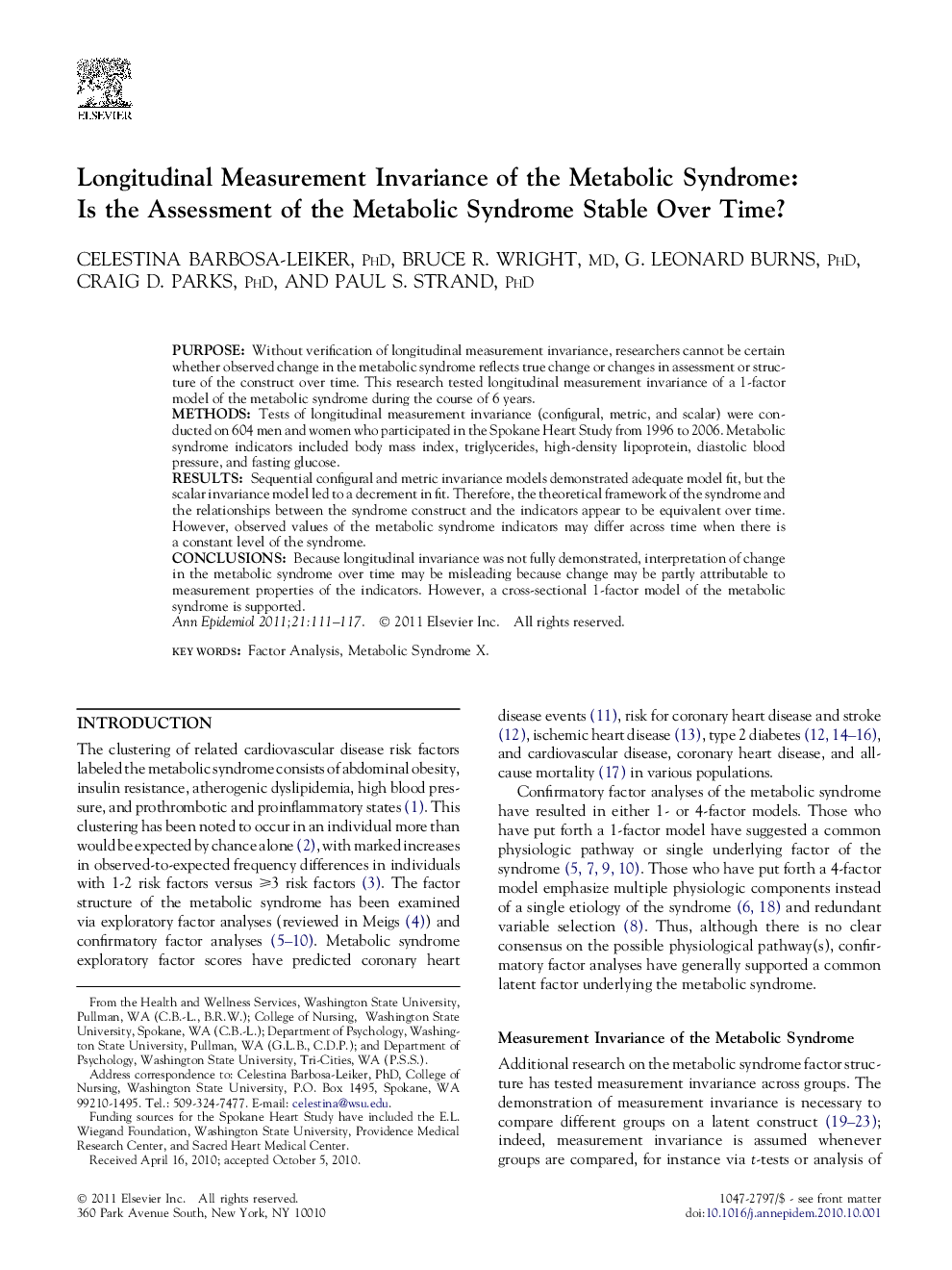| Article ID | Journal | Published Year | Pages | File Type |
|---|---|---|---|---|
| 3444534 | Annals of Epidemiology | 2011 | 7 Pages |
PurposeWithout verification of longitudinal measurement invariance, researchers cannot be certain whether observed change in the metabolic syndrome reflects true change or changes in assessment or structure of the construct over time. This research tested longitudinal measurement invariance of a 1-factor model of the metabolic syndrome during the course of 6 years.MethodsTests of longitudinal measurement invariance (configural, metric, and scalar) were conducted on 604 men and women who participated in the Spokane Heart Study from 1996 to 2006. Metabolic syndrome indicators included body mass index, triglycerides, high-density lipoprotein, diastolic blood pressure, and fasting glucose.ResultsSequential configural and metric invariance models demonstrated adequate model fit, but the scalar invariance model led to a decrement in fit. Therefore, the theoretical framework of the syndrome and the relationships between the syndrome construct and the indicators appear to be equivalent over time. However, observed values of the metabolic syndrome indicators may differ across time when there is a constant level of the syndrome.ConclusionsBecause longitudinal invariance was not fully demonstrated, interpretation of change in the metabolic syndrome over time may be misleading because change may be partly attributable to measurement properties of the indicators. However, a cross-sectional 1-factor model of the metabolic syndrome is supported.
